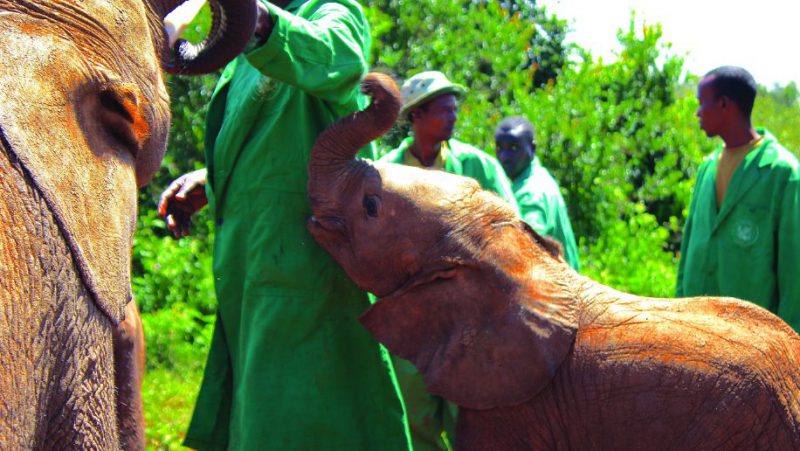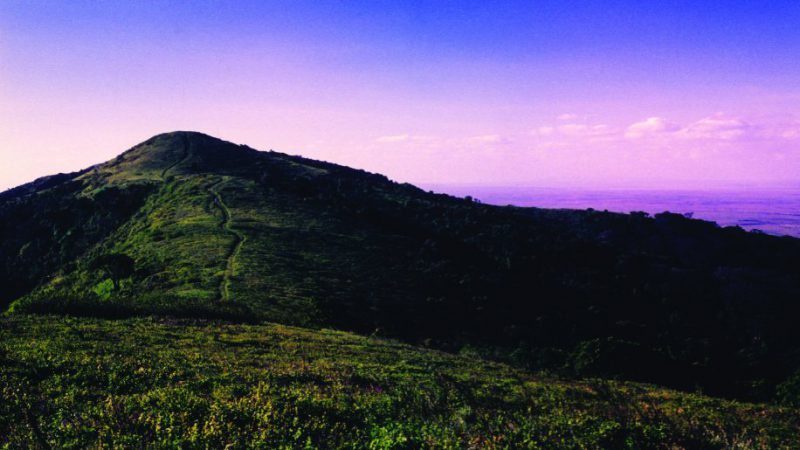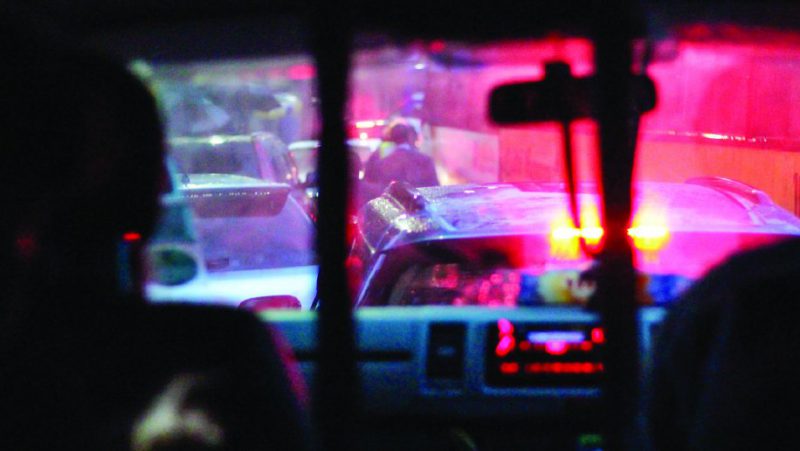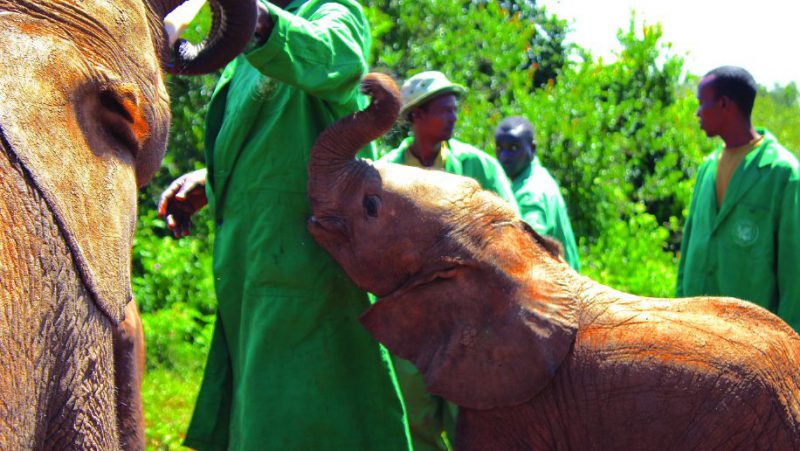Pastures New
Nairobi is branching out of the city center and into new industries
November 30, 2019


“It’s rush hour but nobody’s rushing,” chuckles Godfrey, a Nairobi-based Uber driver, as we sit static at a roundabout on a Wednesday morning, only motorbikes managing to wind their way through. On either side of us, the brightly decorated matatu buses each filled with dozens of commuters certainly aren’t going anywhere fast.
 Gridlocked roads are a stereotype that still rings true about the Kenyan capital, although Godfrey insists – perhaps a touch optimistically – that in five years’ time the jams will be a thing of the past. He says that the past half-decade has seen a big improvement thanks to new roads and bypasses. Out of 17 years as a driver, he’s spent the last one working for Uber and is full of praise for the company.
Gridlocked roads are a stereotype that still rings true about the Kenyan capital, although Godfrey insists – perhaps a touch optimistically – that in five years’ time the jams will be a thing of the past. He says that the past half-decade has seen a big improvement thanks to new roads and bypasses. Out of 17 years as a driver, he’s spent the last one working for Uber and is full of praise for the company.
It’s standard back-of-the-taxi chat, but as such conversations are prone to do, it reveals a lot about the changes this city of 4.5 million people is in the midst of. For one, there’s the rise of ride-hailing. Ubiquitous mobile phones and fast Internet speeds make this a big convenience for many in Nairobi. For foreigners, it negates the need to carry extra cash or haggle prices. Uber has been in the market since 2015, and in 2018 had 216,000 active riders and 6,000 drivers split between the capital and the coastal city of Mombasa.
Alon Lits, Uber’s general manager for sub-Saharan Africa, says the company has found that Kenyan cities are “defined by agility, creativity and adaptability.” It has introduced features such as Uber Chapchap, a lower-priced option served by a fleet of budget vehicles, and Uber Lite, a simpler version of the app designed to work in low-connectivity areas and on any Android model. It’s competing with local players such as Bebabeba, which was launched last year by an association of drivers, and Little, which is backed by Kenyan telecoms giant Safaricom.
Then there’s the technology factor. Kenya has its own version of the overused “Silicon” moniker, in this case Silicon Savannah, and national statistics put the ICT sector’s contribution to the economy at $1 billion in 2017. Nairobi’s popularity as a regional base for international firms is well established, with high-rise offices housing multinationals such as IBM, Cisco, Oracle, Google and Visa.
The country has long been a leader in mobile payments thanks to the popularity of M-Pesa, a money transfer and microfinancing service run by Safaricom, which is used by tens of millions to pay for everything from cars to morning coffees. Kenyans moved the equivalent of almost half of the country’s GDP through their smartphones last year.
The start-up and SME scene is also vibrant. “Agri-tech” is one notable sub-sector – news site Disrupt Africa says the number of start-ups in the market has increased by 110 percent over the past two years, with apps such as Farmers Pride, M-shamba and Taimba finding innovative ways to connect farmers with agricultural suppliers and use data to improve their yields. Other start-ups attracting international attention include BRCK, which makes solar-powered, waterproof modems and routers; AB3D, which uses waste electronics to build 3D printers; and Twiga, a food delivery app that raised more than $10 million in seed funding last year.
This culture has led to a rise in the number of innovation labs and incubators here, such as i-Hub, FabLab and NaiLab, as well as co-working spaces, some of which look like they’ve come straight out of Brooklyn or San Diego. Their numbers are “growing rapidly,” according to Nyambura Gichohi, who set up office brand Ikigai with her sister Wachuka in 2016. They now have two venues, in the leafy suburbs of Westlands and Lavington, and have had little issue filling more than 100 desks as well as several private offices in each.
The Westlands branch has two-and-a-half acres of garden space with desks, terraces and even old shipping containers where events can be held. It’s popular with development consultants and NGO workers, as well as global companies that want to host gatherings in a more unusual setting. The Lavington one is more traditionally corporate and is mainly used by start-ups and venture capitalists, Gichohi says. Still, it is furnished with locally crafted pieces, has views of lush greenery, and offers flexible spaces such as a silent room and a room for breastfeeding mothers, plus an excellent coffee shop serving Kenyan roasts.
Investment Potential
Back on my ride with Godfrey, heading out towards Lavington, a roundabout emblazoned with a large 3D logo of Chinese telecoms behemoth Huawei gave an indication of who was paying for a lot of these roads. Loans from Chinese banks, contractors and the government to Kenya amounted to $9.8 billion between 2000 and 2017, according to the China Africa Research Initiative at Johns Hopkins University. Further big projects are on the horizon – Huawei has promised $170 million to revive stalled plans for a data and media hub called the Konza Technopolis on the outskirts of Nairobi, while the Chinese government will provide an additional $500 million for a new expressway between Jomo Kenyatta International airport and the suburbs.
As with much Chinese investment in Africa and Asia, this has raised eyebrows, with accusations that it is a tool of so-called “debt-trap diplomacy.” Kenya’s debts are rising, and there are doubts that it will ever be able to pay back a $3.6 billion loan from China Eximbank, which funded a new standard gauge railway along the old colonial line from Nairobi to Mombasa (by most accounts a lovely new way to travel from capital to coast). Other concerns surround these companies’ low rates of hiring domestic labor and tensions between the new workforce and locals.
At the same time, the local government is funding civic improvements, and at the popular Crowne Plaza hotel in the skyscraper-filled Upper Hill district, staff are excited about a new road being built up to their front entrance. This area has long been a hub for corporate HQs, as well as organizations including the World Bank and African Development Bank.
Still, activity is spreading outwards, and some feel Upper Hill is losing its appeal. Local investment analysis firm Cytonn blames a lack of retail and residential space as well as insufficient infrastructure (something the new road is intended to change).
“The city is expanding,” says Joyce Ann Wangui, sales director at the Sankara Nairobi hotel in Westlands. “It used to be much more about the central business district; now there are smaller commercial centers on the outskirts and lots of construction there.” KPMG, PwC, Barclays and even the European Commission have all moved their offices to Westlands, while Coca-Cola has moved from its sprawling Upper Hill complex to Lavington.
Another suburb growing in popularity is Karen. Once considered more of a residential enclave with a colonial feel (it’s a common misconception that it takes its name from the Karen Blixen portrayed in Out of Africa; in fact, it’s named after her cousin, Karen Melchior, whose father owned the Karen Coffee Company), better roads have attracted numerous local businesses, trendy office spaces such as 45 Karen Road, and shopping centers containing international brands such as Carrefour and Yves Rocher.
This is having a knock-on effect on the hotel scene. “There wasn’t much competition in Westlands when we opened nine years ago,” says Krishna Unni, Sankara’s group general manager. Conceived as a “boutique business hotel,” it was independently owned and managed until it joined Marriott International’s Autograph Collection this year. Recent arrivals to the suburb include the Villa Rosa by Geneva-based Kempinski; Pullman, Movenpick and Ibis Styles properties from Accor; and a Park Inn by Radisson.
Bouncing Back
Westlands is also home to the Dusit D2 hotel, which reopened in August following the January terror attack by al-Shabab militants that killed 21 people. It came just after Kenya reported a 37 percent increase in visitor numbers for 2018, raising questions about what the impact would be. Tourism is vital to the economy, contributing $7.9 billion last year and accounting for 8.3 percent of jobs.
While a PwC report predicted a temporary dip in visitors of about 13 percent, the African Travel and Tourism Association reported that the market was “booming” by the busy summer season. Michael Metaxas, the Dusit D2’s general manager, is now optimistic, promising a new “positive energy” as well as “enhanced security” certified by international bodies. Tight security is part of the experience at any quality Nairobi hotel, with arriving cars subject to thorough searches of trunks and undersides, and guests passing through airport-style scanners.
This is even the case at the bucolic Hemingways hotel out in Karen, which has views over the Ngong Hills. “We call them the giant hills because the ridges look like they were pressed by the knuckles of a giant,” says Richard Kimenyi, the hotel’s general manager, over a delicious lunch of ostrich carpaccio and Creole-style red snapper in a curry sauce. Guests at the five-star property range from tourists who stay for a few days before flying from the small Wilson airport to Hemingways’ other outposts in the Masai Mara and Mombasa, to business travelers who will sometimes book the entire 45-suite property for an event.
The serviced apartment sector is continuing to grow, with investment firm Cytonn expecting more than 1,000 additional units to enter the market by 2020. Nairobi also has top-quality airport hotels at last, with a Crowne Plaza, Four Points by Sheraton and Hilton Garden Inn all opening in the past two years.
Political Landscape
For many foreign investors, there is a sense of calm after the storm this year. Tensions flared during the 2017 national election, which saw the supreme court overturn the victory of incumbent Uhuru Kenyatta, son of the first president of Kenya, Jomo Kenyatta. A second vote several months later returned the same decision, and almost 100 people are estimated to have died in election-related violence.
In March 2018, Kenyatta and opposition leader Raila Odinga reached an uneasy truce, restoring stability and improving business confidence. GDP growth, which had dipped from 5.8 percent in 2016 to 4.8 percent in 2017, rebounded last year to 6.3 percent. Foreign direct investment (FDI) rose 27 percent to a record high of $1.6 billion, into industries including manufacturing, oil and gas, chemicals and hospitality. The Kenya National Bureau of Statistics says the number of international conferences rose by 6.8 percent.
Long the de facto center of East African business and development, Kenya is facing competition from a northern neighbor. Ethiopia is now the greater FDI recipient, attracting $3.3 billion last year. And while Ethiopian Airlines and Kenya Airways are both leading carriers, the former is now the continent’s most profitable, while the latter is being nationalized to rescue it from a debt crisis.
Kenya maintains a clear lead in the World Bank’s Ease of Doing Business ranking, where it has jumped from 129th place to 61st in five years. However, corruption still “penetrates every sector of the economy,” according to anti-corruption portal GAN. Kenya was the first country to ratify the UN’s Convention Against Corruption under former president Mwai Kibaki, with the struggles of Kibaki’s first anti-corruption chief, John Githongo, chronicled in Michela Wrong’s book It’s Our Turn To Eat. This summer saw the arrest of finance minister Henry Rotich on corruption charges with allegations that his ouster was politically motivated.
Keeping up with the rollercoaster of Kenyan politics and business is made easier through the tenacious local press, with frank coverage appearing in Nation Media Group’s Business Daily and Daily Nation, as well as magazines such as the Nairobi Law Monthly and the East African Business Times. Even so, with Kenya placing 100th in the annual World Press Freedom ranking from Reporters Without Borders, there are clearly issues at play here, too.
Driving along the city’s smooth new roads, stark reminders remain of inequality amid the rapid development. On the way to Hemingways, you pass the Kibera slum and its hundreds of thousands of residents. Asked about the biggest issues facing Kenya, many locals will mention youth unemployment, which stands at 18.4 percent.
Still, this is also a city of creative young people. One night in Westlands, watching local band Switcharoo perform ahead of a European tour, an audience member tells me that the live music scene here is the best in Africa. Add this to the launch of art collectives such as Brush Tu and the Nest, plus a nascent local film industry, and you can’t help but feel that Kenya – and Nairobi in particular – is ready to capitalize on its many multi-faceted talents.
 Exploring the City
Exploring the City
WHAT TO SEE: The best-known of Nairobi’s must-visit attractions is its national park, which provides the chance to see wild lions, rhinos and cheetahs only 4.4 miles south of the city. Nearby is the Karen Blixen Museum, located in the former home of the Out of Africa author; the Giraffe Centre, where you can feed the long-legged creatures from an observation tower; and the Sheldrick Wildlife Trust, which helps to raise orphaned elephants and other animals. For an inner-city refresh, stroll in the Nairobi Arboretum or Karuka Forest. kws.go.ke, giraffecentre.org, sheldrickwildlifetrust.org
WHERE TO EAT: Nyama Mama is an affordable restaurant and bar with four branches that by day offer stylish meeting rooms and by night are about barbecued meats, beers and live music. Nairobi’s large Indian-heritage population means the cuisine is well represented – try Tandoori Patio in Westlands. For a daytime meeting or coffee, head for one of the numerous branches of regional chain Java House, with air conditioning and WIFI. Le Grenier à Pain on Riverside Drive and Boho Eatery in Karen are also great daytime spots.
WHERE TO STAY: Crowne Plaza Nairobi and Sankara Nairobi are excellent for business. For leisure, Fairmont the Norfolk, in the heart of the city, is steeped in history.




